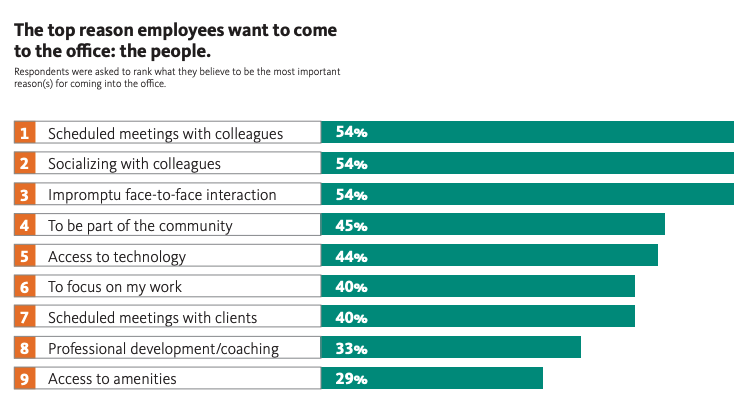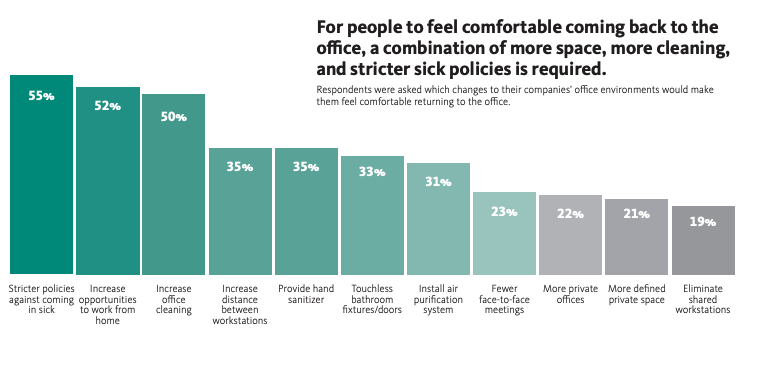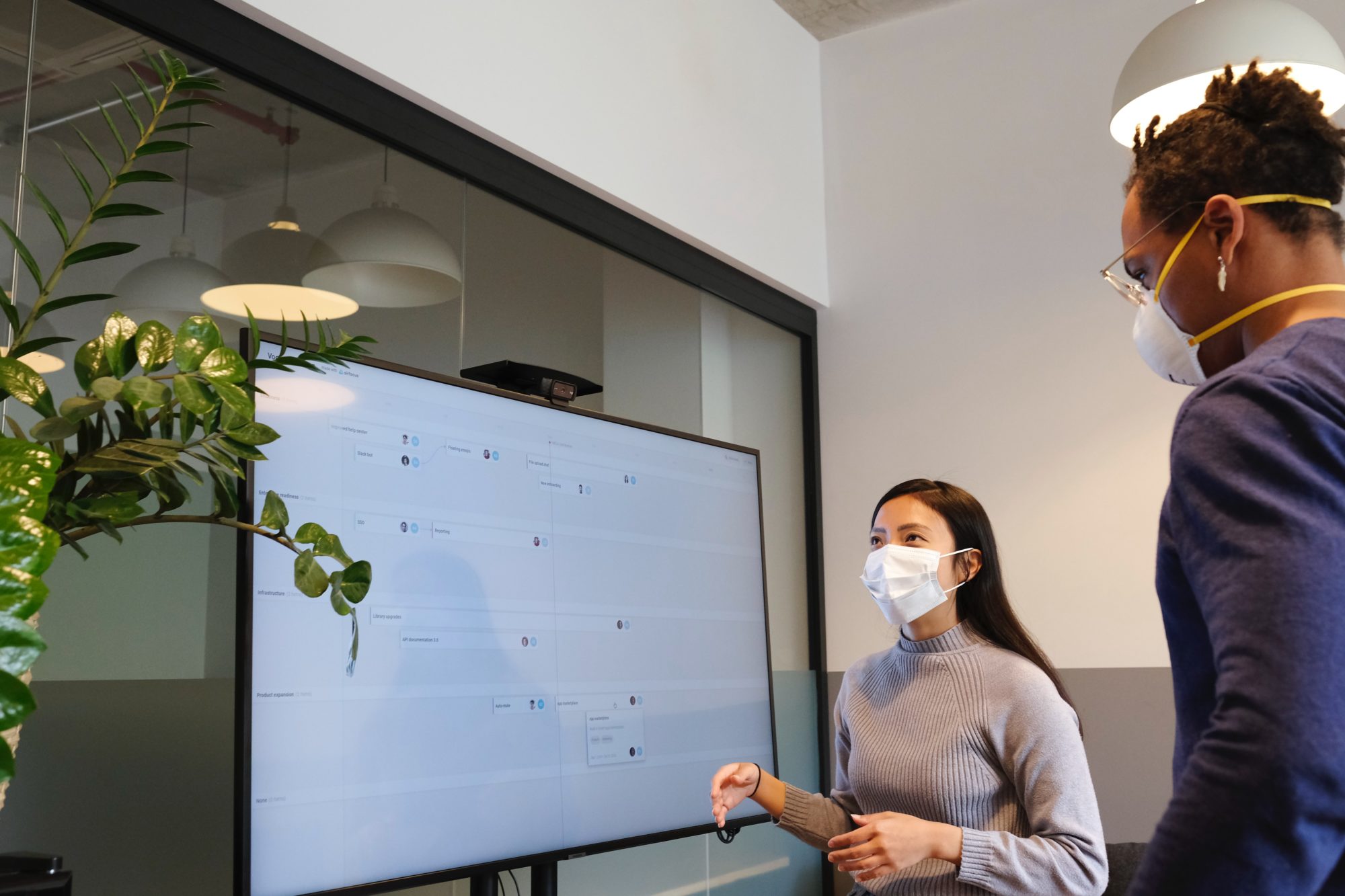At one time or another, almost everyone wondered what it would be like to work from home. Now, six months into the coronavirus pandemic – requiring most employees to work remotely – people are pining for their place of business! According to a new Gensler survey, only 12% of U.S. workers want to work from home full-time. What gives? Are living room laborers craving the comfort of their cubicles? Is quarantine fatigue driving the desire to trade togetherness for traffic jams? Maybe a little, though the real reasons might surprise you. Keep reading to learn why most Americans want to work in shared office space.
Coworkers
The number one thing people miss about going into the office is the company of their coworkers. Regardless of industry, working face-to-face with others is valued above all else. Even those using video-enabled, digital communication platforms report difficulty feeling connected to what everyone else is doing.

Spontaneous brainstorming sessions, friendly competition, and even office gossip fuel creativity and the exchange of ideas, yet all are hard to achieve over email or Whatsapp. In fact, one Stanford economist believes the in-person availability of colleagues is so closely tied to success, he predicts dire consequences for companies choosing to keep workers at home:
- A decline in staff focus and motivation
- An overall reduction in productivity
- Decreased inspiration and innovation
Collaboration
If anything was learned from the viral shutdown, it’s how to remotely facilitate collaboration. It works but is far more effective in the physical presence of coworkers. The playful banter, spirited debates, and shared working lunches that accompany live participation build strong professional relationships. Teammates who trust and understand one another are highly productive and creative.
Companies remaining fully remote after the pandemic should consider leasing flexible office space for in-person activities and experiences. Even employees who only gather together a few times per year report feeling more connected to their coworkers and ingrained in company culture.
Communication
Highly productive people tend to be above-average communicators. Effective communication, according to research conducted by Google, is achieved when participants feel psychologically safe to express themselves. Per the study, psychological safety is cultivated through face-to-face communication:
- Face-to-face communication ensures employees know they are accepted and respected as individuals by the team, which leads to greater productivity.
- Face-to-face communication prevents misunderstandings and stimulates social exchanges – encouragement, validation, humorous engagement — that breed psychological safety.
While some psychologists think the lack of external stimuli experienced by remote workers hinders productivity, others say it’s the increased in-person communication that boosts worker output. Meaning, popping into someone’s office for a quick explanation is more efficient than attempting to convey the same idea over email.
To that end, experts are encouraging companies to consider more than just overhead in their decision to eighty-six their offices. Instead, they suggest, contemplating the impact going completely remote may have on employee engagement and productivity.
Community
Working together in shared space creates a sense of community. That feeling of belonging to something bigger than one’s self influences company culture and drive. Laughing together, overcoming challenges, celebrating wins, and venting about mutual frustrations builds cohesive teams.
The shared office experience often extends past professional alliances. Many people make life-long friends, and even meet life-partners and spouses, at work. It’s this ability to connect on a deeper level that allows business to thrive, and why 50% of those surveyed said they’d prefer to return to the office, even with a 40-minute commute.
COVID
Though they are eager to return to the office, in the age of COVID, American workers expect increased safety protocols for their comfort and health. Examples include:
- Staff staying home when sick
- More opportunities to work from home when necessary
- Intense cleaning
- Social distancing
- Adding additional shifts
- Broadening work hours

If you’re looking to get back to the office setting, we’ve got you covered, with increased coronavirus risk mitigation practices and numerous memberships plans crafted for your comfort. We look forward to welcoming you to Office Partners on Pearl! Contact us to learn more or schedule a tour.






This Post Has 4 Comments